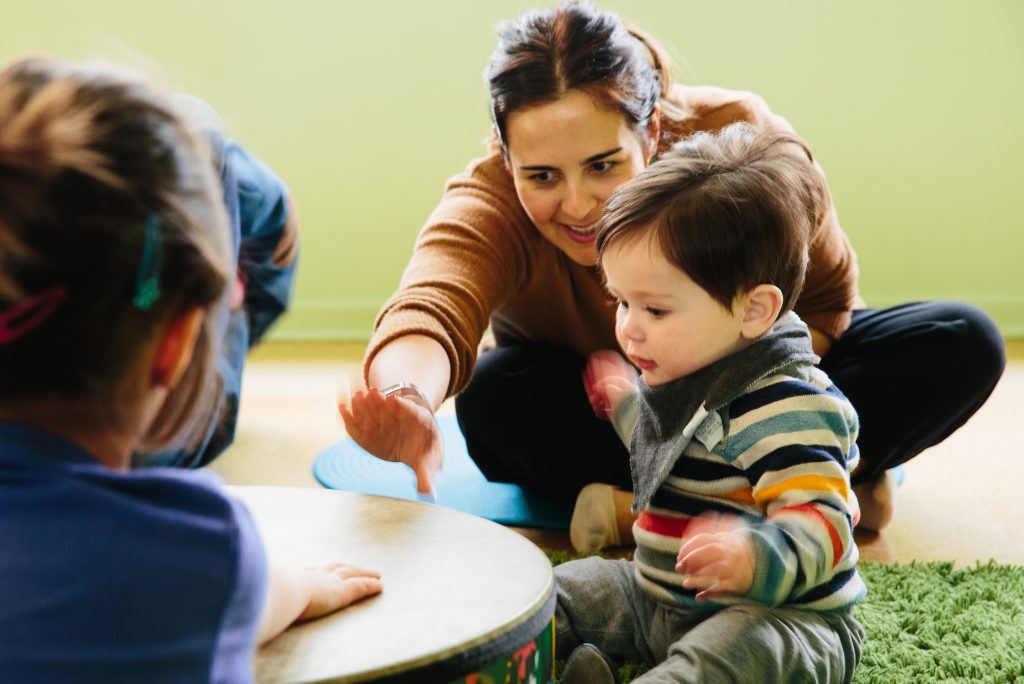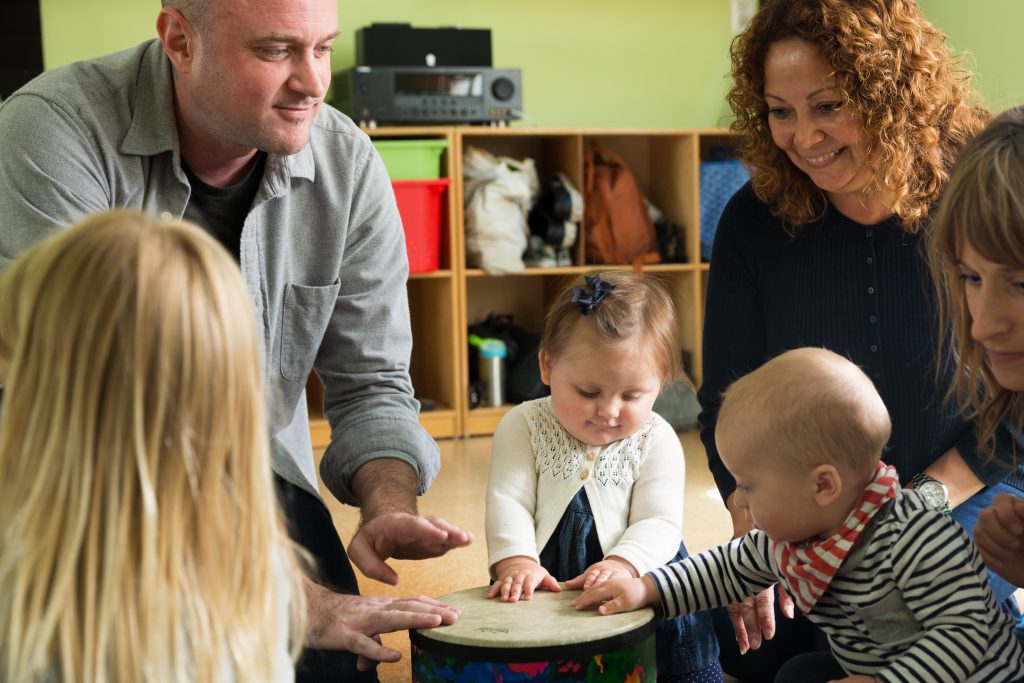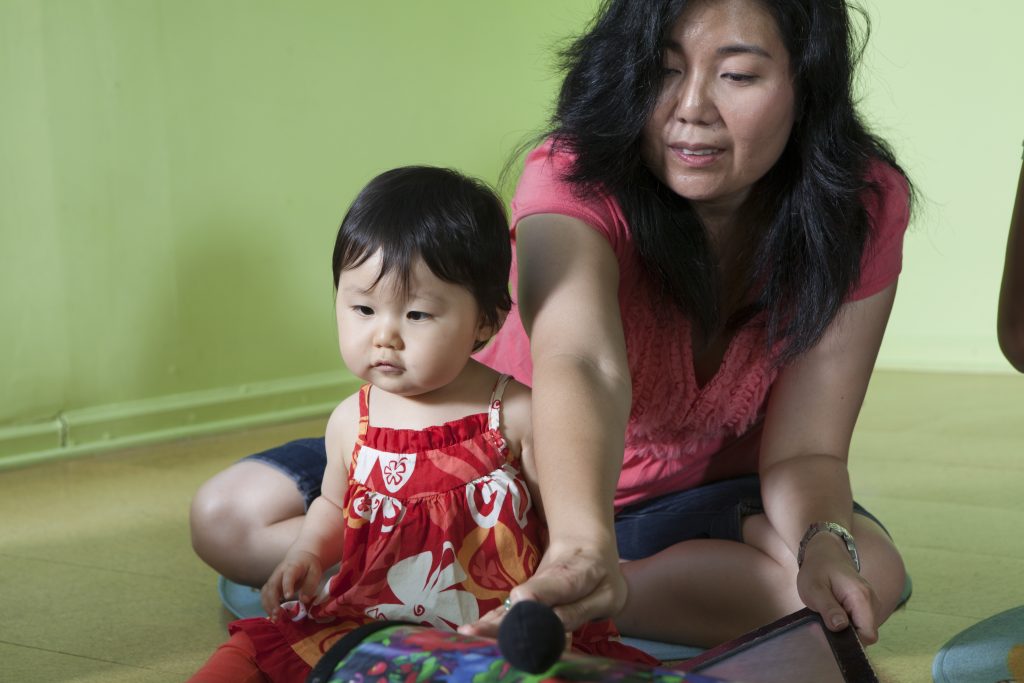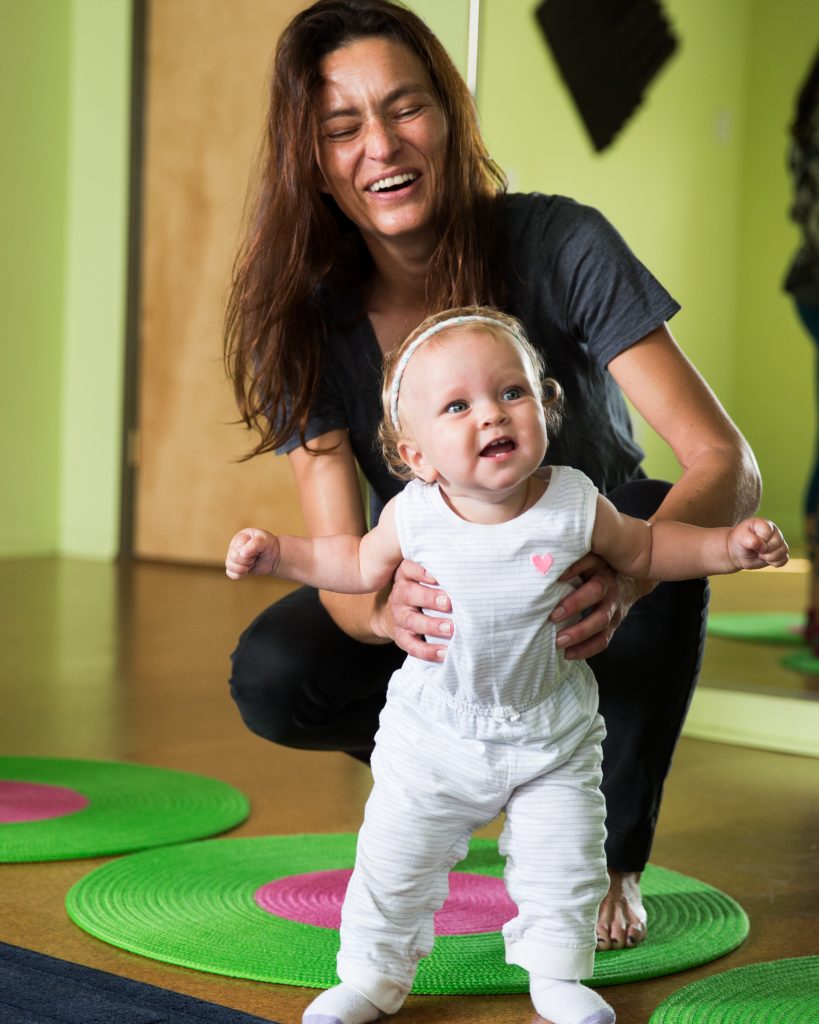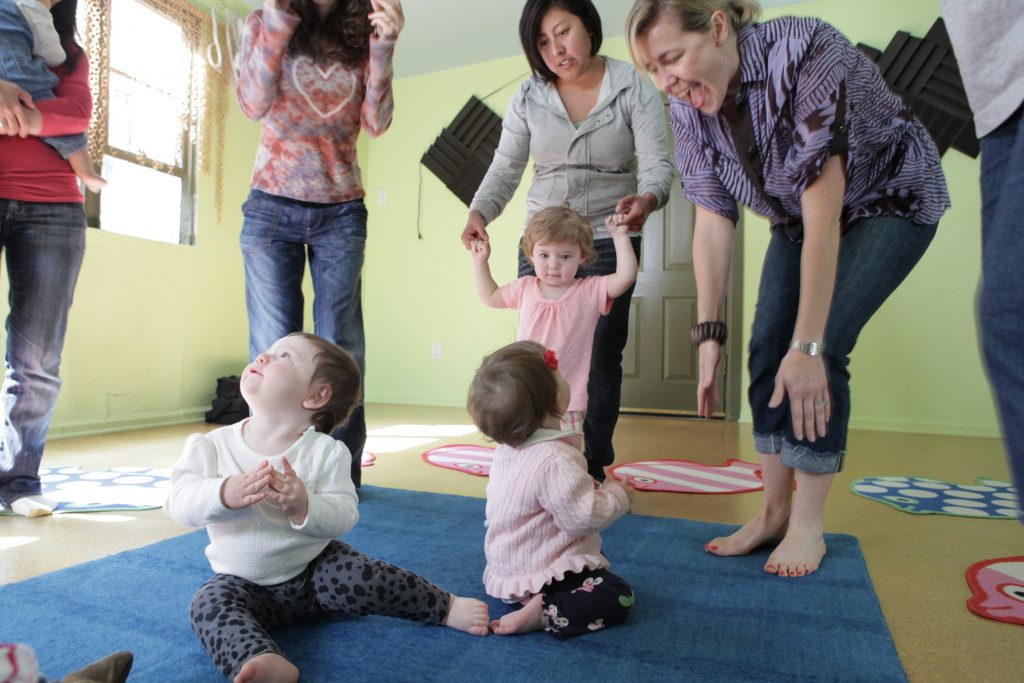Your Baby’s First Music Class
Different than you imagined, but don’t skip it: Creating fun (screen-lite or screen-free) family music time with your infant or baby, using web-based materials…
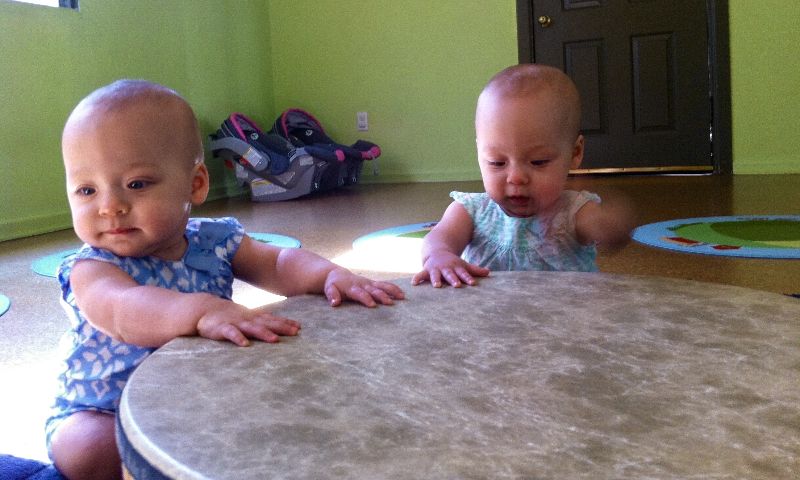
8/17/20
Dear Families,
When we manned the phones at PLAY, we would often hear from brand new and expectant parents, calling to ask us when their babies would be old enough to come to a music class. We know how exciting it can be to prepare for your babies’ first activities, how fascinating it is to watch them experience things that are brand new to them, and also how disappointing it is to have in-person, parent-and-child activities out of reach, maybe just when your family is ready for them.
We would love to meet your babies in the classroom, but in lieu of that for now, we wanted to share some early music basics, and strategies that you can use to modify web-based materials (hopefully PLAY music materials, but you can apply these tips broadly) for your music-making at home with your infants and babies.
*Note: We’re not experts on the subject of children and screens. The following is based on our experience with and research on the topic of young children and music over the past 15 years at PLAY, our experience as parents, and our brief experience (since April 2020) running an early childhood, music-and-movement program exclusively online.
Modifying Web-Based Music for Infants & Babies
Attunement
Whether we’re together online or in person, supporting attunement (awareness of and responsiveness to babies’ cues), is always our priority at PLAY. So, no matter what activity we’re doing as a group, you are always free and encouraged to modify it in response to your baby’s needs in the moment. For instance, say you’re tapping your baby’s knees to the rhythm of a song, and you see by her cues that she would much rather you pick her up, or that she would like to kick her legs without your interference. Certainly, go along with what feels best based on how she is reacting.
In responding to our babies’ cues, we don’t necessarily have to stop participating in what the group is doing musically. In the example I gave, when we’re tapping a beat, what we’re working on is steady beat ability (the learned ability to feel and express a steady beat, which has been linked to improved self-regulation and language acquisition in children as they develop). If you were to pick your baby up during this activity, you could simply translate the beat to a gentle rock with your body and a rhythmic tap on your baby’s back.
Another example: Say we’re doing a small movement activity; you have eye contact with your baby and you’re doing a finger play (like “Itsy Bitsy Spider”). Your baby enjoys it (smiles, makes happy sounds) for a while, but then turns away (maybe he’s over stimulated). Let him take a break from the eye contact, perhaps while you keep humming along to the melody—or doing whatever feels right—until he turns back to you for more. There is never pressure to do the activity the way anyone else is doing it. Following your instincts about what your baby needs always takes precedence over following along with the class.
(The concept of attunement is of course not just for babies. In music class, our responsiveness to children’s cues allows them space to own, enjoy, and benefit from their music and movement experiences as they grow.)
The Teacher is You
Again, whether we’re in-person or online, the focus of our youngest participants in PLAY music is usually not the music teacher; it’s you. Your teacher is there to guide you through some activities that you can do every day at home, to model musical behavior in an accessible way, and to help grow your family music repertoire over time (with the support of web materials, like videos to remind you of movement activities, and downloadable tracks and lyrics).
Applying This Online
With attunement as the priority, and keeping in mind baby’s preference for you as the guide, here are some suggestions for using online materials to enhance your family music time.
- If you have a non-mobile baby, consider laying him or her down facing you, and using the audio only, or glancing at the screen yourself to inspire your musical play. (This can be done in a Zoom class and/or using one of our many recorded classes.)
- If you have a crawling or cruising baby, set yourself up where your baby has room to move and to decide where to focus. That focus will happily often fall on you, so don’t forget to sing and move along (which may relieve stress for you too).
- Consider mirroring your device to a TV. This will give your family better audio, a larger view of the teacher (and other families if you’re in Zoom), and help to remove the distraction of your keyboard for mobile babies and older siblings.
- If there are features of Zoom that feel too distracting for you or your child, try participating along together with one of the recorded classes in short stretches at first. Try a live class again when and if you feel ready.
- Just as you would in an in-person class, take breaks if your child needs them for any reason, or duck out early. You should always feel free to modify the activities for yourself and your child as needed.
- Remember that class time is just one way to engage with the music. If you prefer a completely screen-free experience (for your child of any age), you can create that using web materials for your research. If you’re using PLAY materials, listen to the tracks, sing the songs a cappella throughout your day, learn movement activities from the videos to try with your child, and check out each song page for tips and ideas.
We’re here to answer your questions. Take care, and we hope to see you soon : ).
Anne & James

